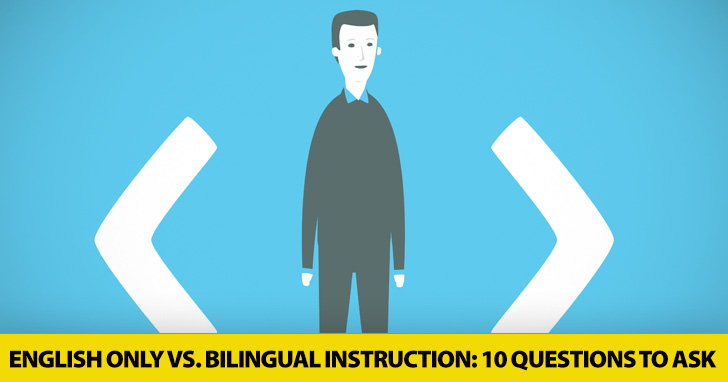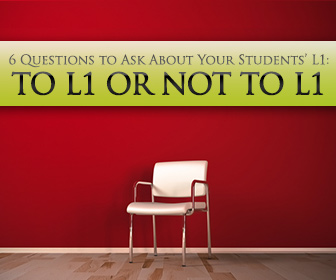10 Questions to Ask before Deciding on English Only vs. Bilingual Instruction


Keeping an English only classroom has its benefits. Students achieve good language acquisition even if it’s a little slower in coming, and they don’t become overly dependent on translators and dictionaries. Of course, if I allow first language use, it decreases student stress and helps tackle tough language barriers. My students usually want to use their first language in class, but is that what’s best for them? If you have struggled with this question, or are struggling with it now, here are some questions to ask yourself before making your decision.

Some schools advertise English only classrooms, and if yours is one of them you may find answering the L1 question is very easy. If your school has a policy to keep students’ first languages out of the classroom, then you should do just that. When an ESL student signs up for courses and pays tuition for English only classrooms, he should get what was promised.
Oftentimes, ESL teachers are also second language learners. When a person travels to a foreign country to teach English, she may also spend her time studying the language of her students. Some teachers may be tempted to allow their students’ L1 in the classroom because they want to learn that language. This, however, is not a good reason to allow your students to speak their native language in class. Behind that classroom door, you are the teacher and not the student, and your students and their English education should be the priority. So if you are looking to boost your own second language skills, save it for outside the classroom and focus on your students while you are in it.
Are you teaching a conversation class? Are you teaching business English? Thinking about the goals of the class may help you answer the L1 question. If the goal of the class is to get students speaking English (such as in a conversation class) allowing students to use their first language may be counterproductive. However, if you are teaching skills that your students will use in a bilingual environment (such as the business world), allowing use of native languages may be more like what they will encounter when they have completed their English studies.
Advanced level students have very few reasons for using a bilingual dictionary or translator in class, but beginning level students are another matter. When a person is first studying English, the amount of information she is expected to learn can feel like drinking water from a fire hose – too much, too fast and too hard to get. For these students, allowing L1 use (to some degree) may be reasonable and even helpful. Teachers and students must be careful in this situation, however. Some students may become so overly dependent on translating to their first language that they hinder their second language acquisition.
Learning English involves more than just memorizing vocabulary and grammar rules. Becoming fluent in English also includes developing a variety of speaking strategies – asking questions, clarifying and giving explanations. As students advance in their speaking skills, these conversation strategies should be required of them. If allowing use of a first language will inhibit development of these skills, it should be avoided.
When I taught ESL in China, nothing could make me use Chinese in the classroom. This is because my Chinese skills were so bad that using it with my students would only have confused them. Your own language abilities, if they are like mine were, may be reason enough to avoid using your students’ native language in the classroom. The students can speak it fluently. Can’t they help each other understand through use of L1? Maybe. But what happens if a student gives a classmate an incorrect explanation in their first language and you do not understand what they have said? This misunderstanding could lead to more problems and misuse of language later. Thinking about how well you know your students’ L1 might also be a factor in whether you allow it in the classroom, and it’s a question worth asking yourself.
Whatever your decision, it will have both advantages and disadvantages. Weighing them against each other will be the best way for you to decide what should happen behind your classroom door.
Do you allow students to use their first language in your classroom?